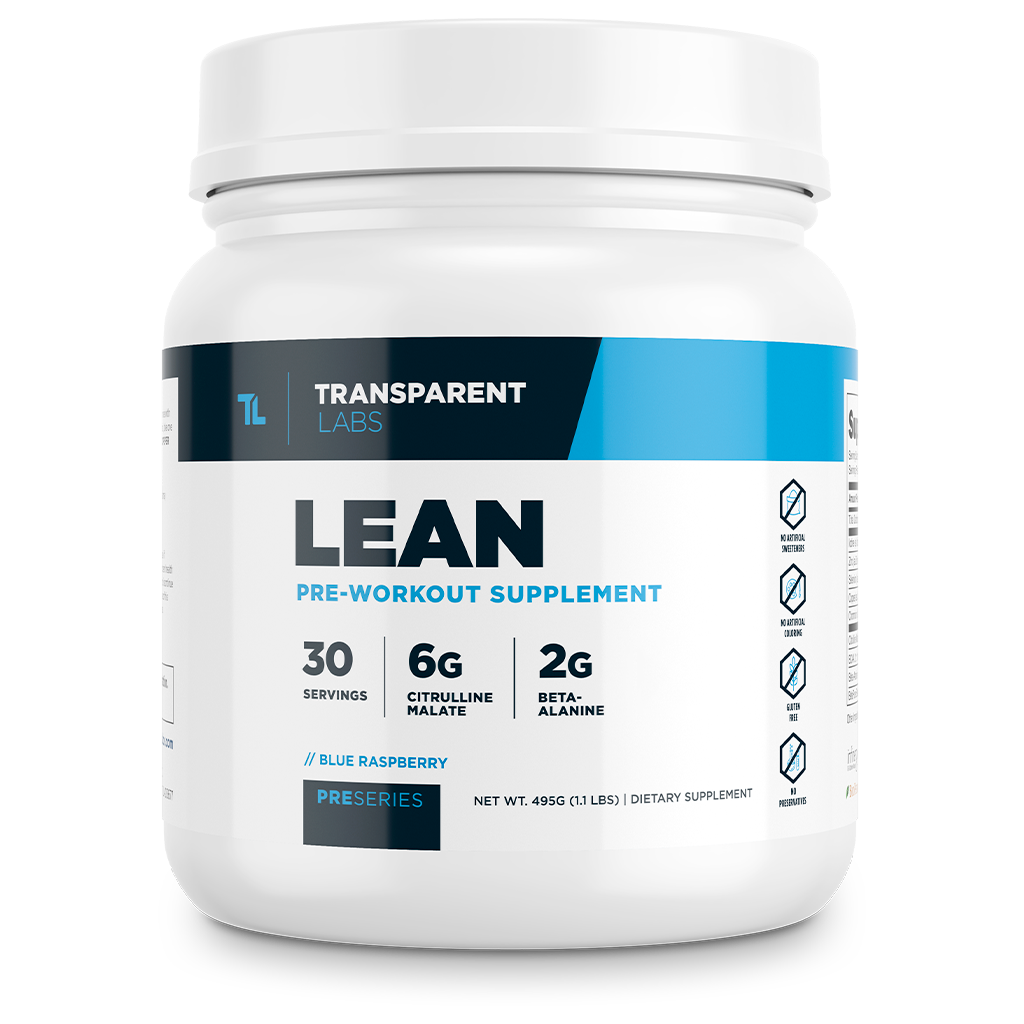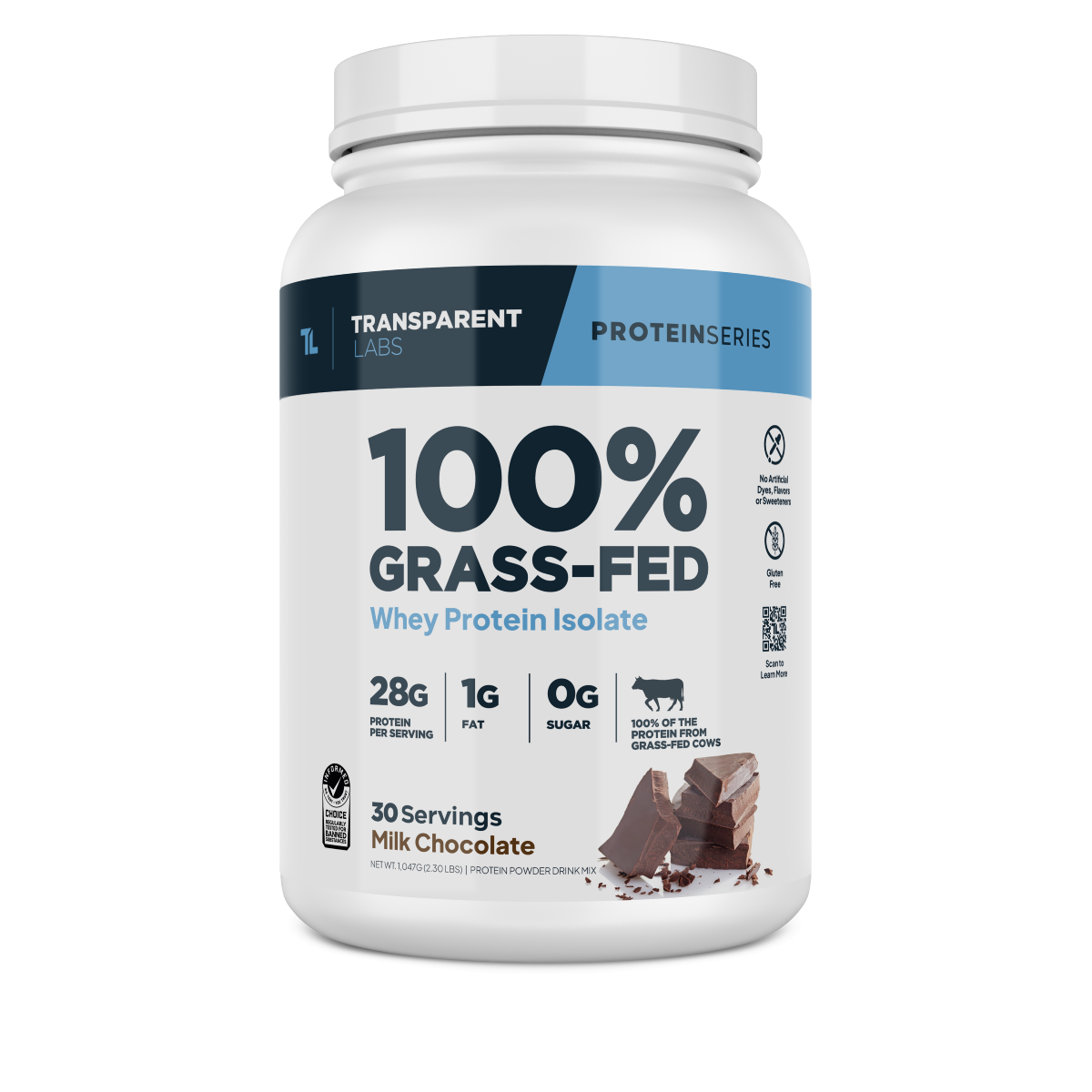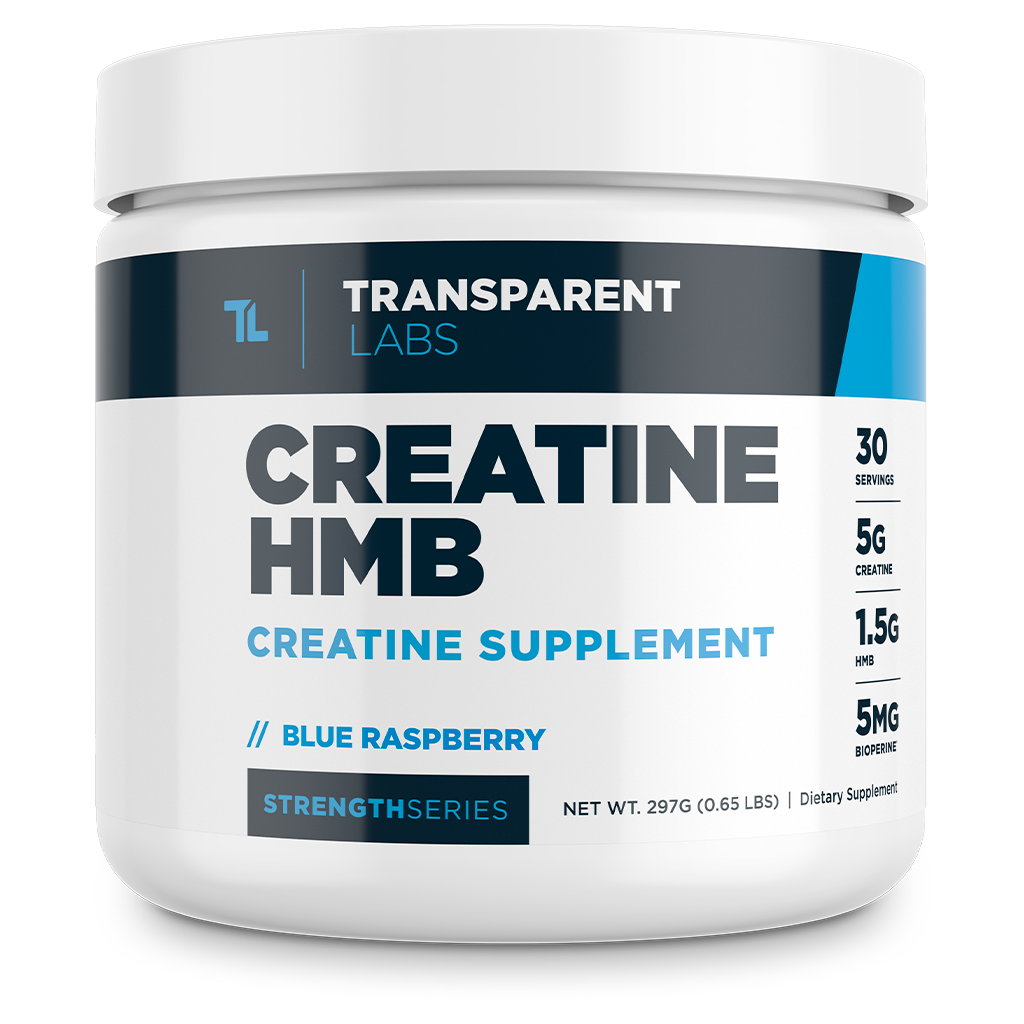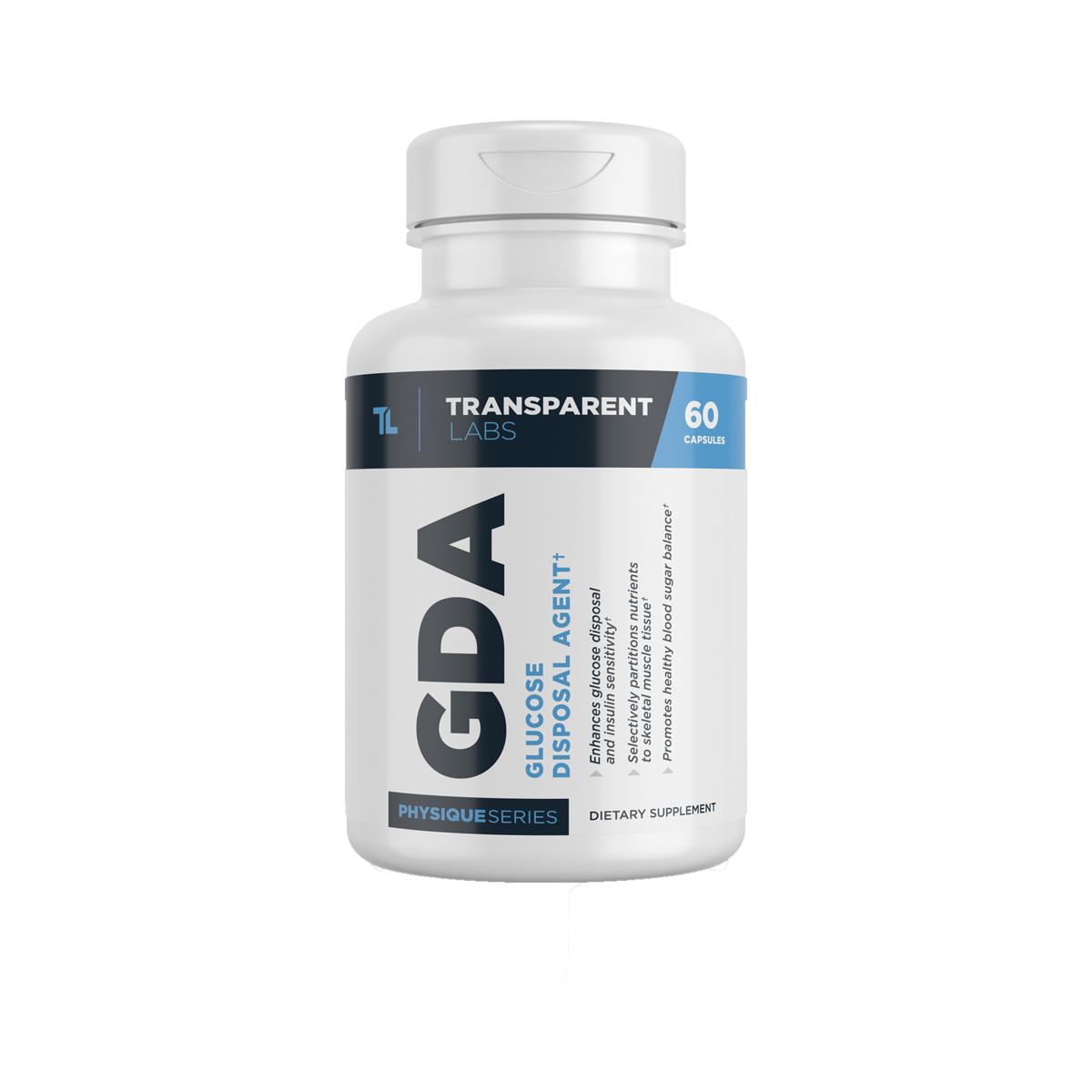The 10 Best Stim-Free Pre-Workout Ingredients (Updated for 2024)
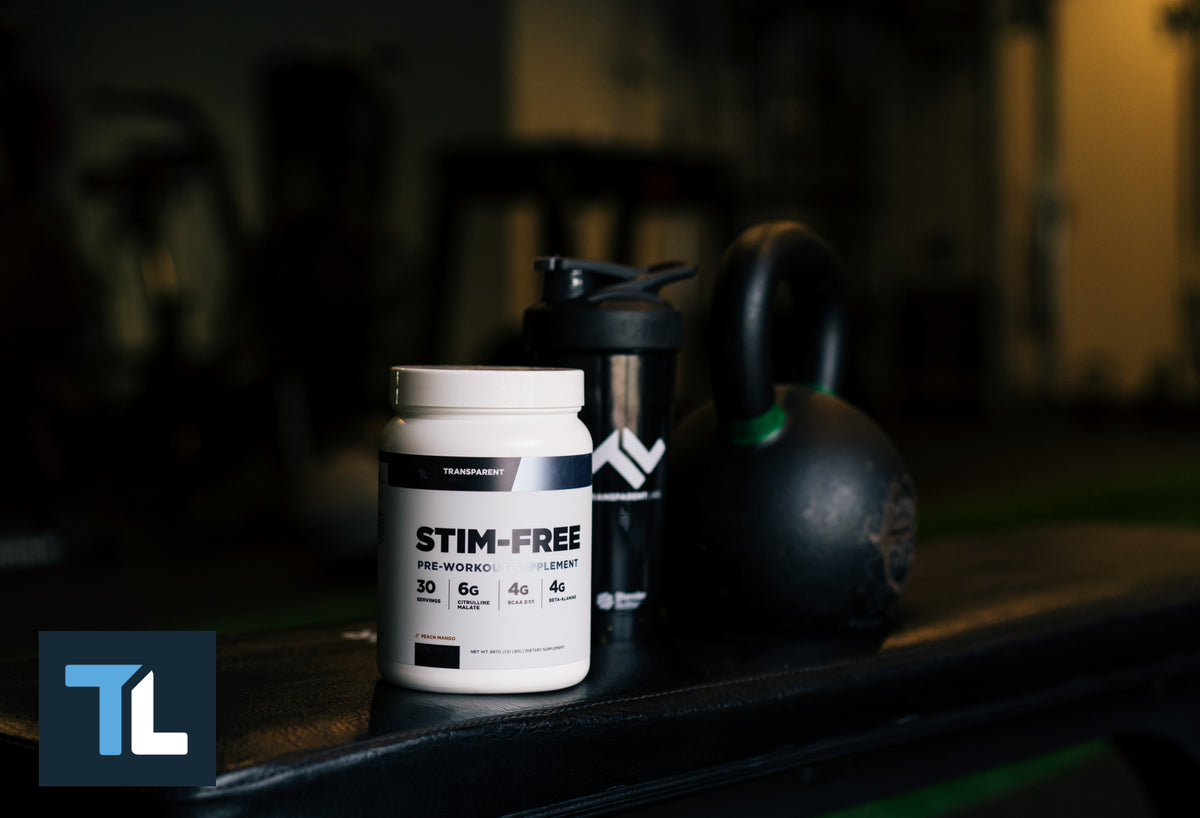
What Are the Best "Stim-Free" Pre-Workout Supplement Ingredients?
The term "stim-free pre-workout supplement" might seem like an oxymoron at first glance, but there are plenty of ingredients in pre-workouts that don't work as stimulants like caffeine. Examples of such ingredients include L-citrulline, beta-alanine, creatine monohydrate, and betaine. More gym-goers and fitness enthusiasts are turning to caffeine-free pre-workout formulas to avoid the unpleasant side effects of feeling overstimulated (e.g. jitters, nausea, and anxiety) while reaping the benefits of such non-stim pre-workout ingredients.
But not all stim-free pre-workouts are created equal. Some of them aren't even free of stimulants, as a whole—formulas labeled as "caffeine-free pre-workout" might contain lesser-known stimulants, like theobromine, synephrine, and hordenine.
With that in mind, let's take a look at what a stim-free pre-workout is, the best stim-free pre-workout ingredients, and how non-stim pre-workouts can help enhance exercise performance and muscle recovery.
What is a "Stim-Free Pre-Workout" Supplement?
Let's clarify what stimulant-free (or "stim-free") means in the context of a pre-workout supplement. You're probably familiar with caffeine, the most widely consumed central nervous system (CNS) stimulant on the planet [1]. So, why is caffeine classified as a stimulant?
Well, stimulants are substances that work by increasing physiological activity within the nervous system, especially the CNS (which includes the brain and spinal cord). When caffeine binds to adenosine receptors in the brain, the endogenous "fatigue" molecule adenosine is unable to bind to those receptors, thereby increasing activity within the CNS [2].
Essentially, caffeine "tricks" your brain into thinking you are not tired or fatigued. It's no surprise, then, that studies consistently show that taking caffeine before exercising reduces the rate of perceived exertion [3].
But for all the advantages caffeine has to offer as the primary stimulant in pre-workout supplements, it can cause side effects like agitation, irritability, jitters, and rapid heartbeat. This makes the large amounts of caffeine in pre-workout formulas intolerable for some individuals. (And while you could take half a dose, for example, of a "stim-based" pre-workout, doing so also reduces the amount you ingest of the other ingredients in the formula, causing diminution in overall efficacy).
Fortunately, there are a good amount of ergogenic, non-stim pre-workout ingredients with empirical evidence supporting their use.
Clarifying Terminology: Stim-Free vs. Non-Stim vs. Caffeine-Free Pre-Workout
As with many misnomers in the supplement realm, there's now a litany of confusing ways companies use to describe their pre-workout formulas, namely:
-
Stimulant-free pre-workout
-
Non-stimulant (non-stim) pre-workout
-
Caffeine-free pre-workout
To reiterate, caffeine is just one of the potentially many stimulant compounds found in pre-workouts; even so-called "caffeine-free pre-workouts" may contain other stimulant ingredients, like theobromine, yohimbine, and synephrine. Hence, such formulas are not truly "stimulant-free" or "non-stimulant." Unfortunately, many caffeine-free pre-workouts do indeed contain other stimulants in them, misleading consumers.
The terms "stim-free pre-workout" and "non-stim pre-workout" are interchangeable, however, and these formulas should be completely free of any stimulants (not just caffeine). Be mindful of these semantic differences when you're searching for stim-free pre-workouts.
Stimulant-Based vs. Stimulant-Free Pre-Workout: What's the Difference?
In the majority of pre-workout supplements, you'll find one or several stimulatory ingredient(s) in the formula. As we just mentioned, caffeine is the primary stimulant in pre-workouts, which can significantly improve mental and physical performance, muscle strength gains, and even fat loss [4, 5].
However, given the intricate feedback mechanisms between regions of the brain and body, virtually all stimulants come with a range of potential side effects, such as jitters, increased blood pressure (and therefore, decreased blood flow), anxiety, addiction, heart palpitations, and sharp swings in energy or mood (i.e. "crashing").
On the flip side of conventional stim-based pre-workouts, we have stimulant-free pre-workouts. A major benefit of using a stim-free pre-workout is that it can make getting a good pump in the gym easier since caffeine is vasoconstriction (meaning it hinders blood flow). Transparent Labs PUMP pre-workout is so-named because it contains no stimulants and is designed to maximize blood flow to muscle tissue during training.
Another benefit is that you won't build a tolerance to a stim-free pre-workout, meaning efficacy will remain similar no matter how long you use it. Intuitively, a non-stimulant pre-workout won't be as likely to cause side effects like crashing and jitters.
Of course, a stim-free pre-workout will not give you that same buzz or burst of energy and motivation as a caffeine-loaded pre-workout. For some gym-goers, the switch to a stim-free pre-workout might be challenging, especially if you're a habitual coffee drinker or regularly ingest large amounts of caffeine from other sources; there will be a period of withdrawal if you're cutting out all caffeine/stimulants cold turkey.
A Look at the 10 Best Stim-Free Pre-Workout Ingredients
Many non-stim pre-workouts are made with a variety of putative ergogenic ingredients, including amino acids such as branched-chain amino acids (BCAAs), beta-alanine, citrulline, and arginine, as well as creatine, taurine, vitamins, and electrolyte minerals that aid in hydration and reducing muscle fatigue. Stim-free pre-workouts will often also contain non-stimulant nootropics, like alpha-GPC and CDP-choline, L-theanine, huperzine-A, and acetyl-L-carnitine (ALCAR), several of which we discuss below.
Here's our updated list of 10 evidence-based, stim-free pre-workout ingredients that can help improve athletic performance through diverse and synergistic mechanisms:
1. L-Arginine/L-Citrulline
L-arginine and L-citrulline are nonessential amino acids that serve as precursors for nitric oxide production. Nitric oxide is an integral vasodilating compound that signals blood vessels to relax and expand.
Thus, taking citrulline and/or arginine before exercising can help improve blood flow to muscle tissue [6, 7]. In turn, your muscles receive more oxygen and nutrients to promote performance and recovery. Fortunately, almost every pre-workout supplement on the market—whether stimulant-based or not—has L-citrulline (malate) and/or L-arginine.
Evidence-based doses of these ingredients range from 4,000 to 8,000 mg for L-citrulline and 1,500 to 3,000 mg for L-arginine. (Note: The bioavailability of L-citrulline is higher compared to L-arginine, making it a preferred nitric oxide-boosting nutrient for pre-workout applications.)
2. Beta-Alanine
Unlike the alpha-amino acids found in dietary protein, beta-alanine is an important constituent of the dipeptide carnosine that acts as a buffer in skeletal muscles and an antioxidant in brain tissue. Like L-citrulline, beta-alanine is a ubiquitous pre-workout ingredient with compelling human studies backing its efficacy.
More specifically, research indicates that beta-alanine effectively increases total exercise capacity and workout performance, emphasizing the former [8]. Beta-alanine is found throughout the body but is notably concentrated in muscle tissues, especially type II (fast-twitch) muscle fibers, where it combines with histidine to form carnosine. In turn, carnosine helps buffer muscle cells against acidic byproducts of intense exercise (e.g. hydrogen ions and lactic acid)[9].
Beta-alanine is often supplemented in doses ranging from 2 to 5 grams per day. A sodium-dependent transporter facilitates its uptake into muscle cells. (Hence, co-ingestion of sodium bicarbonate is suggested to bolster the benefits of beta-alanine supplementation [10].)
Beta-alanine is generally safe, but high doses can lead to a sensation known as paresthesia—a harmless tingling feeling, usually in the face, hands, or upper torso. (You can learn more about this phenomenon by clicking here.)
3. Creatine

Creatine is a naturally occurring amino acid-like molecule that serves as a de facto energy reservoir in muscle cells by rapidly replenishing ATP (adenosine triphosphate). ATP is the quintessential energetic currency of the cell. The depletion of ATP during exercise is what signals cells that energy is lacking, ultimately impacting performance.
Intuitively, when more ATP is available for muscle cells, strength, power, and endurance increase, allowing for more intensive workouts and accelerated recovery. Research consistently demonstrates that supplementing creatine (monohydrate) bolsters muscle creatine stores, translating to improved recovery time and enhanced exercise performance [11].
Creatine monohydrate doses typically range from 2,000 to 5,000 mg per day, which is also the amount you'll likely find in stim-free pre-workouts. Alternatively, you can buy a standalone creatine supplement, like Transparent Labs Creatine HMB, and add it to your favorite stim-free pre-workout supplement or take it post-workout.
4. Taurine
Taurine is a sulfur-based amino acid derived from the amino acid cysteine; it's biosynthesized in the liver via the cysteine sulfinic acid pathway. Being widely distributed in tissues, taurine is present in high concentrations in cardiac muscle, skeletal muscle, and the central nervous system (i.e. within the brain and spinal cord).
The localization of taurine within cells is also noteworthy—it's mostly found in the cytosol and the mitochondria and membranes [12]. Taurine doesn't have a dedicated receptor, but it modulates various ion channels and neurotransmitter receptors, such as GABA-A and glycine receptors, indicating the multifarious roles of this amino acid derivative [13].
Relevant beneficial actions of taurine as a non-stim pre-workout ingredient may include [14]:
-
Osmoregulation: Taurine acts as an osmolyte, helping to regulate ion balance and water content in cells.
-
Calcium Handling: Taurine modulates calcium signaling and homeostasis, playing a role in muscle contraction and neurotransmission.
-
Antioxidant Defense: Taurine can act as an antioxidant, scavenging reactive oxygen species and reducing oxidative stress.
-
Bile Acid Conjugation: In the liver, taurine conjugates with bile acids, aiding lipid digestion and absorption.
-
Neurotransmission: Taurine functions as an inhibitory neurotransmitter in some instances, modulating neuronal excitability.
The widespan properties of taurine are suggested to improve exercise endurance, cognitive function, and recovery, making it a worthy stim-free pre-workout inclusion [15, 16]. Typical pre-workout doses of taurine range from 1,000 to 3,000 mg. Lower doses, such as the modest amounts found in most caffeinated energy drinks, are likely ineffective for their intended purpose.
5. Betaine (Trimethylglycine)
Trimethylglycine, familiarly known as (glycine) betaine, is a modified amino acid that was the first betaine discovered in nature after being isolated from sugar beets (Beta vulgaris) [17]. The term "betaine" (pronounced BEE-tayn or bay-tuh-EEN) originates from this discovery. It is typically reserved for trimethylglycine/glycine betaine, but there are now numerous known "betaines" that, like taurine, are biologically important osmolytes [18].
Betaine serves as a methyl donor in converting homocysteine to methionine, thereby reducing homocysteine levels and potentially mitigating cardiovascular risks [19]. It is thought that this may enhance blood flow during training, but more evidence is needed. Early evidence suggested that betaine may perturb blood lipid profiles by increasing low-density lipoprotein (LDL) cholesterol, but more recent studies seem to refute this finding when dosing is kept to less than 4 grams per day [20].
Though the mechanisms are not entirely understood, betaine supplementation has shown promise in enhancing power output and, to a lesser extent, endurance capacity in athletes [21, 22, 23]. It is plausible that betaine supplementation promotes athletic performance by maintaining cellular hydration and healthy homocysteine levels.
On supplement labels, you'll usually see betaine listed as "betaine anhydrous," which is a powder form of betaine that contains no water in the crystalline structure. Most studies of betaine as an ergogenic aid show efficacy at doses between 2,500 to 4,000 mg per day.
6. Electrolytes
Many minerals act as electrolytes in aqueous solutions, meaning they carry an electric charge that influences concentration gradients across cellular membranes and enzyme functions. Sodium, chloride, potassium, phosphorus, calcium, and magnesium are notable examples of mineral electrolytes that are well-known to impact hydration status and exercise performance [24].
The key when it comes to electrolyte supplements is finding bioavailable minerals so your body can properly absorb and utilize these micronutrients before hitting the gym without causing gastrointestinal distress. Aside from sodium and chloride, the most bioavailable/GI-friendly forms of mineral electrolytes are their amino-acid-chelated counterparts. Here are some examples:
-
Calcium bisglycinate
-
Potassium glycinate
For good measure, toss a scoop of Transparent Labs Hydrate in your pre-workout supplement to promote optimal hydration while you exercise.
7. Vitamins B6, B9, B12 and Vitamin C
Vitamins, as a collective group, are essential micronutrients that act as coenzymes (read: "helper molecules") for enzymes throughout the body. Vitamins B6, B9, and B12 are water-soluble vitamins that are particularly important for cognitive function, cardiovascular health, nutrient metabolism, and immunity [25, 26]. As such, you can't go wrong with having these in your pre-workout arsenal.
Here's some more rationale for why these vitamins make sense in pre-workout supplements:
-
Vitamin C (Ascorbic Acid) — An indispensable free-radical scavenger that is suggested to enhance blood flow by enhancing the absorption of dietary nitrate [27].
-
Vitamin B6 (Pyridoxine) — For athletes and gym-goers, B6 plays a crucial role in glycogen utilization and stress response; thus, it is a crucial micronutrient during exercise [28].
-
Vitamin B9 (Folate) — Proper folate levels aid in red blood cell formation and oxygen transport, thereby potentially enhancing aerobic capacity and reducing fatigue [29].
-
Vitamin B12 (Cobalamin) — As the only vitamin containing a metal ion (cobalt) at its core, vitamin B12 is critical for maintaining the nervous system and forming red blood cells. For those involved in strenuous exercise, adequate B12 supports neuromuscular function, energy metabolism, and oxygen transport [30].
8. Essential Amino Acids (EAAs) and Branched Chain Amino Acids (BCAAs)

Stim-free pre-workout supplements may also include branched-chain amino acids, or BCAAs for short. BCAAs (leucine, isoleucine, and valine) are a subgroup of essential amino acids (EAAs) that are suggested to be the "gatekeepers" of muscle protein synthesis [31]. Since the body does not produce EAAs/BCAAs, we need to ingest these amino acids for proper muscle recovery and biological function.
Research suggests that BCAA supplementation before working out may improve endurance and muscle strength, as evidenced by reduced rates of perceived exertion and increased lactate thresholds during exercise [32, 33].
It's worth noting that the ergogenic effects of EAA/BCAA supplementation are not relegated to strictly pre-workout applications; several studies indicate that post-workout EAA/BCAA supplementation can mitigate the severity of delayed onset muscle soreness (DOMS) and reduce markers of muscle damage, such as creatine kinase [34].
While the ergogenic benefits of EAAs and BCAAs are robust, they should not be construed as substitutes for a balanced diet and training regimen. These amino acids offer targeted advantages for exercise performance and recovery, but their efficacy is contingent upon the broader context of an individual's nutrition and exercise protocol. If you're someone who already consumes a relatively high-protein diet, BCAAs/EAAs probably won't produce a noticeable benefit.
9. Glycerol (Glycerin)
Glycerol is a simple, naturally occurring three-carbon molecule that serves as a backbone for triglycerides (fats/lipids) in the body and serves as a humectant. A humectant is a substance that attracts moisture (e.g., water), and we're talking about cellular hydration in the case of glycerol.
Imagine your muscle cells as tiny water balloons. The more hydrated they are, the more volumized and "pumped" they appear. Now, why is this beneficial during exercise? When you ingest glycerol prior to resistance training, it encourages your muscles to hold onto water, amplifying cell volume and, ultimately, muscle fullness [35].
Moreover, the increased cellular hydration from glycerol supplementation imparts an osmotic effect, driving water away from the extracellular space (between cells) and into muscle cells. This process enhances muscle "swelling," which not only gives a visual pump but can also promote muscle protein synthesis through cell-swelling mechanisms. In layman's terms, the glycerol-induced "pump" isn't just for show; it can kickstart the processes contributing to muscle growth [36].
10. Dietary Nitrates
At first glance, the term "dietary nitrates" might make you think of processed meats and potential carcinogens. But let's clear the air: nitrates are not intrinsically "bad," and we're focusing specifically on the naturally occurring, inorganic nitrates found in vegetables like spinach, arugula, and beetroot. Far from carcinogenic, inorganic nitrates are a promising addition to your pre-workout supplement regimen.
Dietary nitrates get converted to nitric oxide (NO) in the body through a complementary mechanism to the classical arginine-citrulline-NO pathway. The journey begins with nitrate (NO3-) being reduced to nitrite (NO2-), which subsequently gets converted to nitric oxide (NO) in a low-oxygen environment—like your skeletal muscles during intense exercise. Recall from earlier that NO is a vasodilator; it relaxes and widens the blood vessels, facilitating better blood flow to your muscles while you train.
Better blood flow means increased nutrient and oxygen delivery to hard-working muscles, enhancing both aerobic and anaerobic performance. There's also evidence to suggest that an increase in NO—via nitrate supplementation—can attenuate muscle fatigue, allowing you to push harder for longer [37].
While dietary nitrates can have substantial benefits, there's still debate over the ideal dosage and timing. The consensus leans toward consuming nitrate-rich foods or supplements about 2-3 hours before exercise for optimal benefits [38]. Yet, the "sweet spot" for nitrate intake varies depending on several factors, including your baseline diet and individual metabolic rate.
Is a Stim-Free Pre-Workout Supplement Right For You?
Stimulant-free pre-workout supplements are ideal for athletes and fitness enthusiasts who may be sensitive to stimulants, train at night/close to bedtime, or want to take a tolerance break. If you fall in these categories, check out Transparent Labs Stim-Free Pre-Workout, an all-natural formula providing clinically effective doses of non-stim pre-workout ingredients that we discussed above, and more!
Overall, stimulant-free pre-workouts offer a range of health benefits for athletes and other fitness enthusiasts seeking a more natural way to boost their performance. Whether you're sensitive to stimulants or want to find a healthier alternative, stimulant-free pre-workouts may be worth a shot!

